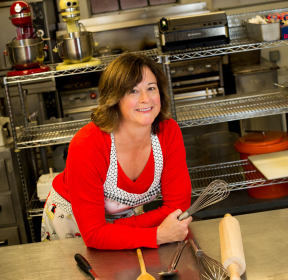The next time you make brown rice, make double and freeze. Simply thaw and whip up Fried Vegetable Brown Rice. This is healthy and so simple. Add whatever vegetables you like or even add a small amount of leftover rotisserie chicken or any other leftover meat to make for a satisfying entree. Remember too, that you can offer a stir fry side dish to accompany most any grilled or pan seared protein.
Stir frys do not need to be complicated. You need seasonings such as garlic and ginger, protein if you like, can be tofu, tempeh, seafood, chicken or beef, and a simple sauce. Personally, I fancy sweet and spicy. Let us not forget noodles….so many options!
Here are a couple things to keep in mind when preparing fried rice or stir fry:
1) For fried rice, always use cold rice, this is why leftover is best. Brown or white rice are equally suitable.
2) Have all ingredients that are going into fried rice or a stir fry are prepped ahead and ready to go into the pan.
3) Remember to use meats as a condiment rather than the focus of your stir fry, it will be much healthier and you will get plenty of the daily fiber requirement your body needs.
4) Be creative and use leftover meats and vegetables to reduce waste.
5) Cook meats first, remove from pan, wipe with a paper towel and move on to vegetables.
6) Cook the vegetables that will take the longest first, adding veggies down to the quickest cooking. Add the cooked meat back to the pan at the very end with sauce ingredients.
7) Stir fry odds and ends of vegetables you have in your crisper to use them up!
8) Pan to use? Of course you can use a wok, if you do not have one, no worries. A large heavy skillet with good heat conduction is perfect! You want the pan very hot before adding oil to begin cooking.
Here are the vegetables in order from longest cooking to shortest:
Carrots
Celery
Onions
Peppers
Mushrooms
Napa cabbage
Broccoli
Snap peas
Pea pods
Green onions
Bean sprouts-just need to be warmed
Water chestnuts-just need to be warmed
Bamboo shoots-just need to be warmed
Ginger-seasoning
Garlic-seasoning
Pantry items to have on hand:
Low sodium soy sauce
Toasted sesame oil
Chicken broth (better than bouillon)
Chili Garlic Sauce
Hoisin Sauce
Rice vinegar
Sesame seeds
The key to making stir frys, fried brown rice or noodles, is to have everything prepped and ready to go in the pan. Depending on the number of ingredients you use, dinner can come together in a matter of minutes on the stove.
So get ready to stir fry! I will be sharing many quick stir fry recipes throughout summer.
Have a wonderful holiday!!
Angie


 Follow me on X
Follow me on X